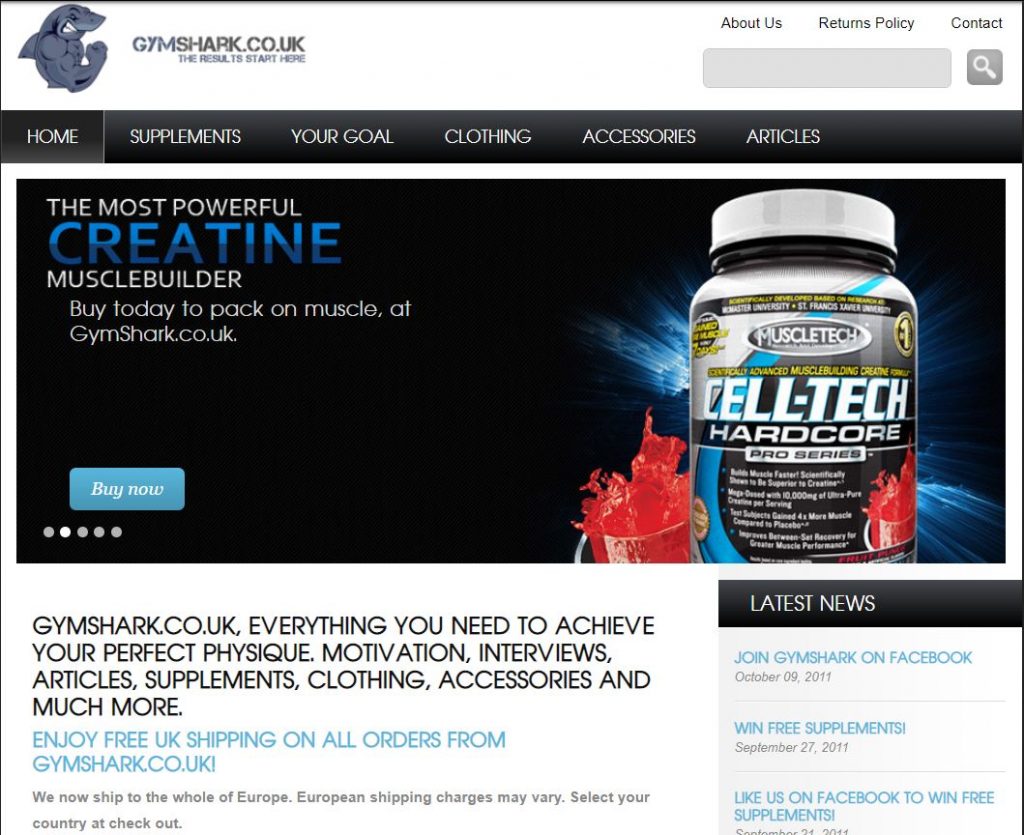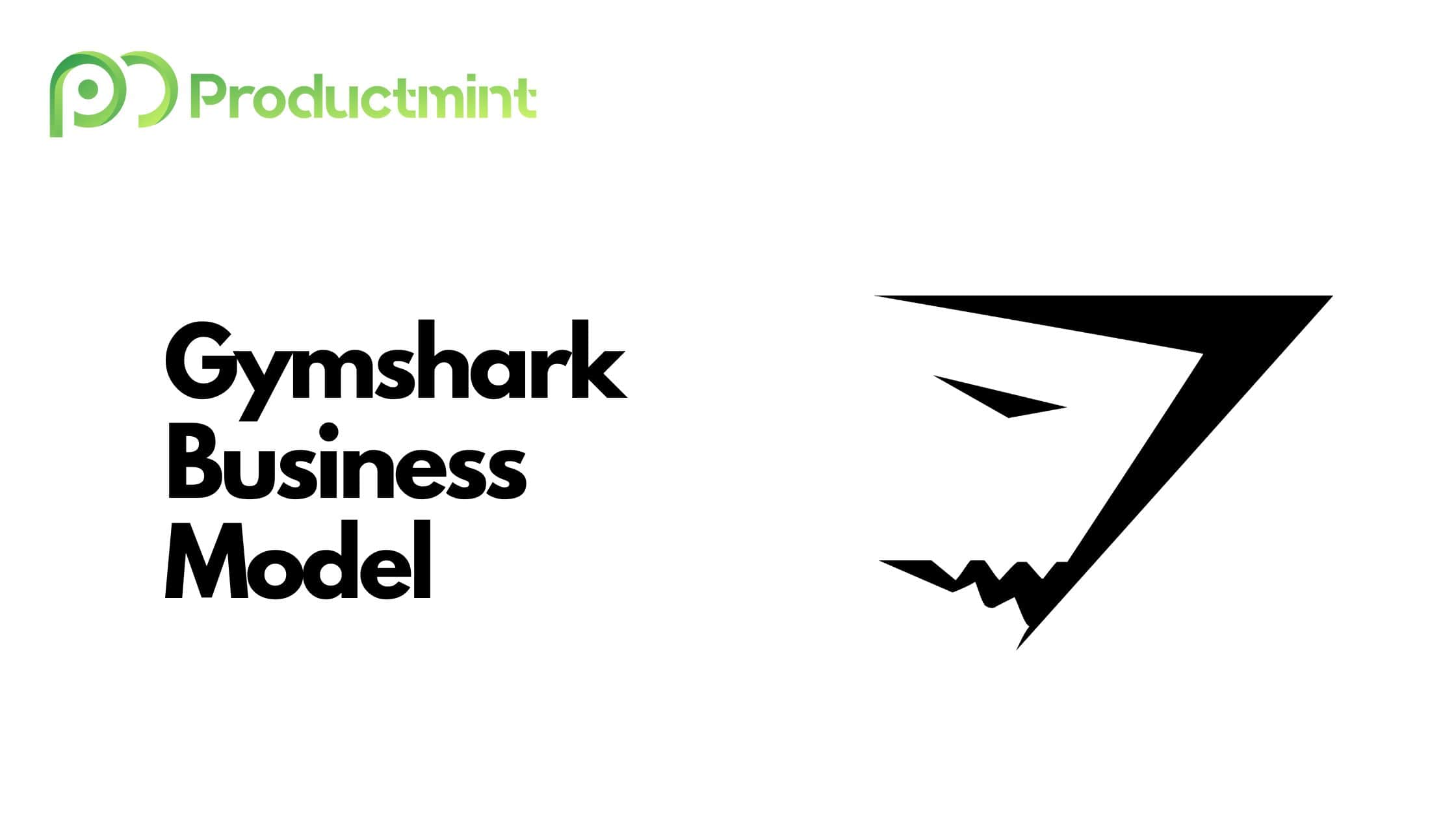Executive Summary:
Gymshark is a British company that produces and distributes fitness apparel and equipment in a variety of categories.
Gymshark makes money by selling clothing and other items. The business model of Gymshark is predicated on promoting its products through influencers as well as its own social channels.
Founded in 2012, Gymshark has risen to become one of the world’s leading athleisure brands. It is currently being valued at £1 billion.
What Is Gymshark?
Gymshark is a British company that produces and distributes fitness apparel and equipment in a variety of categories.
The company offers items for both males and females. Example products include leggings, shorts, hoodies, t-shirts, socks, underwear, bottles, yoga mats, and many more.
Gymshark’s products are primarily distributed via its own online store. It also operates a physical retail store in London.
Its products are mainly promoted through a variety of online channels such as Instagram, TikTok, or YouTube. Over 5 million people follow the brand on Instagram alone.
Apart from selling clothes, Gymshark has also released its own training app (available for Android and iOS devices).
There, users can check out hundreds of exercises, create their personal workout plan, and track their progress.
How Gymshark Started: Company History
Gymshark, which is headquartered in Solihull, United Kingdom, was founded in 2012 by Ben Francis and Lewis Morgan.
Francis himself had been exposed to the world of entrepreneurship from an early age. His grandfather ran a company that lined industrial furnaces with ceramic and brick for which he began working at age 14.
Despite not wanting to go down the same path of 12-hour days of toil and sweat, working for his grandfather did inspire Francis to start a business of his own.
Instead, he taught himself how to code apps and websites at the age of 16. Around the same time, he also began lifting weights, which sparked his passion for fitness.
Francis’ first go at entrepreneurship came when he coded up a website that sold car license plates. Driven by his love for working out, he created two iPhone apps named Fat Loss Abs Guide and iPhysique. He even managed to earn around £8,000 with one of those apps.
In 2011, he enrolled in Birmingham’s Aston University where he pursued a degree in business and management. That’s also where he wound up meeting his co-founder Lewis Morgan, a freshly enrolled student himself.
Together, they launched the first version of Gymshark in late 2011. The inspiration for the name simply arose from the fact that the gymshark.co.uk domain was available for £3.50 on GoDaddy.

Initially, Gymshark started out as a dropshipping business that would sell supplements. The website wasn’t much of a success initially and only recorded its first sale after two months, netting them a grand total of £2 on the purchase.
In the meantime, Francis was attending university classes in the morning and working five-hour shifts as a Pizza Hut delivery driver, making £4.95 per hour. Morgan himself was working as a retail assistant.
Eventually, in early 2012, the pair (which was aided by Ben’s brother Joe) decided to pivot towards clothing. At the time, fitness clothes were primarily designed for bulkier and older athletes and would thus not fit many novice lifters. Established brands like Nike would offer clothing at extremely high price points, which made it unappealing for the predominantly young crowd Gymshark was aiming for.
A friend of theirs showed the founders how to screen print t-shirts. Ben’s grandmother, furthermore, taught him how to sew. They then decided to use the little money they made from their jobs and the dropshipping business and purchase a screen printer as well as a sewing machine.
Armed with equipment, they first began creating clothing, primarily in the form of hoodies and tank tops, for themselves. At the time, they were also following a variety of YouTube fitness influencers, such as Jeff Seid and Alon Gabbay, and ultimately decided to send them samples of their clothing.
Over time, more and more of those influencers began wearing Gymshark-branded gear in their videos. As a result, they began to generate about £300 a day in revenue, which forced Ben and Lewis to sew clothes late into the night. That was 2013.
Realizing they might be onto something, the duo decided to pay £3,000 for a stall at the Body Power Expo, an annual fitness expo that takes place in their hometown of Birmingham. Daily sales, as a result of the exposure they received during the event, skyrocketed from £300 to over £30,000.
Not long after, in 2014, they both decided to drop out of university to pursue Gymshark full-time. For the fiscal year 2015, Gymshark had already managed to cross £9 million in annual revenues.
However, not everything would always be going according to plan. In 2015, Gymshark had migrated its backend to Magento, a provider of shopping software. Unfortunately, despite working on the new site for six months, it couldn’t handle the onslaught of traffic.
During Black Friday 2015, Gymshark’s site, therefore, crashed for more than eight hours, costing the company an estimated £100,000. Francis, to appease customers, hand-wrote more than 2,500 apology letters to customers and offered them discounts in the process.
That same year, during the summer, Francis also brought on Steve Hewitt to become Gymshark’s newest CEO. Hewitt, whom Francis became acquainted with in a local gym, possessed decades of experience in fashion retail at firms like Reebok.
They, furthermore, brought on Paul Richardson, another seasoned executive, as Gymshark’s executive chairman. In 2016, Gymshark was also named the fastest-growing retailer in the U.K. after generating £13 million in annual sales for the year.
Unfortunately, the company had to also suffer another blow to its leadership team. Co-founder Lewis Morgan decided to remove himself from the business while remaining an active shareholder in Gymshark.
Over the coming years, Gymshark continued to grow like gangbusters. For the fiscal years 2017 and 2018, the company recorded annual sales of £41 million and £104 million, respectively. The exponential increase in revenue also prompted it to move headquarters from Redditch to Solihull. Meanwhile, founder Ben Francis was also named in Forbes’ 30 under 30 list.
Even the coronavirus pandemic, which led to the (temporary) closure of thousands of thousands of retail facilities as well as the move to home workouts, didn’t affect Gymshark. In fact, due to its asset-light and online-only model, Gymshark actually thrived.
In order to capitalize on that opportunity, Gymshark’s executive team decided to raise funding – the first in its existence. In August 2020, leading VC firm General Atlantic invested £200 million into the company, valuing it at £1 billion.
The cash injection allowed Gymshark to ramp up its internal expansion efforts. In March 2021, it opened up its American HQ in Denver, Colorado. Furthermore, it purchased various fulfillment centers across Canada and the United States where the majority of its sales are now being generated.
Gymshark was even able to snatch up in-demand executives from competitors. In May, it hired Danielle Petesic, Lululemon’s former Vice President of Product Development, as its Chief Product Officer.
In July, after six years of pursuing various positions within the company, Ben Francis announced that he would reassume the role of CEO once again. Former CEO Steve Hewitt moved to become Gymshark’s executive chair.
That same month, however, the company also had to face a small blowback. Sony Music Entertainment (SME) filed a copyright infringement lawsuit against Gymshark for using SME-owned songs without its approval.
In late 2021, on the heels of the appointment of serial entrepreneur Gary Vaynerchuk as an advisor to Gymshark’s board, news also began to emerge that the company would be eyeing an IPO. However, these rumors were quickly denounced by Francis.
Today, more than 1,000 people are employed by Gymshark which operates out of offices in Hong Kong, Mauritius, the U.K., as well as the United States.
Gymshark’s Business Model
Gymshark makes money by selling clothing and other items. The business model of Gymshark is predicated on promoting its products through influencers as well as its own social channels.
The company was not only one of the first to capitalize on influencer marketing by sending out gear to selected athletes, it also runs very successful channels of its own.
In fact, Gymshark has close to 20 million followers across all of its social media accounts, which include Instagram, Facebook, TikTok, YouTube, and more.
Each of these accounts is managed by a separate employee who, as a result, posts content particularly tailored to that platform.
Due to its nimble organizational structure, Gymshark is also able to react to trends and technological shifts much earlier. For example, it had opened a TikTok account weeks/months before its competitors.
Furthermore, founder Ben Francis also has a strong social presence across Instagram and YouTube where he posts content about his achievements and struggles. This creates an additional layer of authenticity, which further aids the Gymshark brand.
Apart from company-specific accounts, Gymshark is also marketed through its group of influencers called Gymshark Athletes.
While the company does compensate its athletes with up to $100,000 a year, it remains a much more sustainable model compared to Adidas, Nike, or Under Armour which spent hundreds of millions sponsoring professional athletes.
It, additionally, isn’t easy to become a Gymshark Athletes. The company does not necessarily focus on follower counts but the engagement an athlete commands. Furthermore, Gymshark gives its athletes complete editorial freedom in how they want to promote its products, which further helps the brand become more authentic.
As a result of that exclusivity, non-Gymshark influencers are often posting pictures and videos wearing its clothes in hopes of becoming a brand ambassador as well.
Apart from its elaborate social media strategy, Gymshark also differentiates itself by exclusively selling its products through its own website. Gymshark products can, therefore, not be purchased in retail stores like JD or online stores such as ASOS.
This enables Gymshark to maintain a singular brand experience and thus not rely on the execution of other sales partners.
Moreover, the company is able to sell its inventory at a much higher pace since it owns the data and can thus reliably predict demand. This, in turn, allows the company to reinvest its capital at a much faster pace.
Nevertheless, Gymshark will also operate its own selected online stores in the future. A London branch is slated to launch in the summer of 2022.
Gymshark Funding, Revenue & Valuation
Gymshark, according to Crunchbase, has raised a total of £200 million in just one round of venture capital funding.
The funding itself was led by General Atlantic, one of the world’s leading venture capital firms based in New York City.
During the round, which Gymshark raised in August 2020, the apparel company was able to amass a post-money valuation of £1 billion.
For the fiscal year 2021, Gymshark has generated £400 million (around $550 million) in annual revenue.
